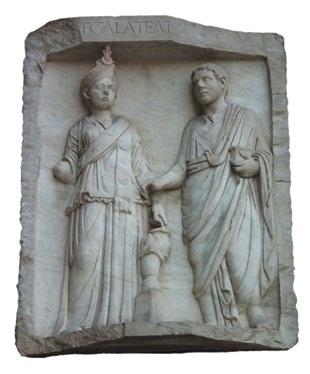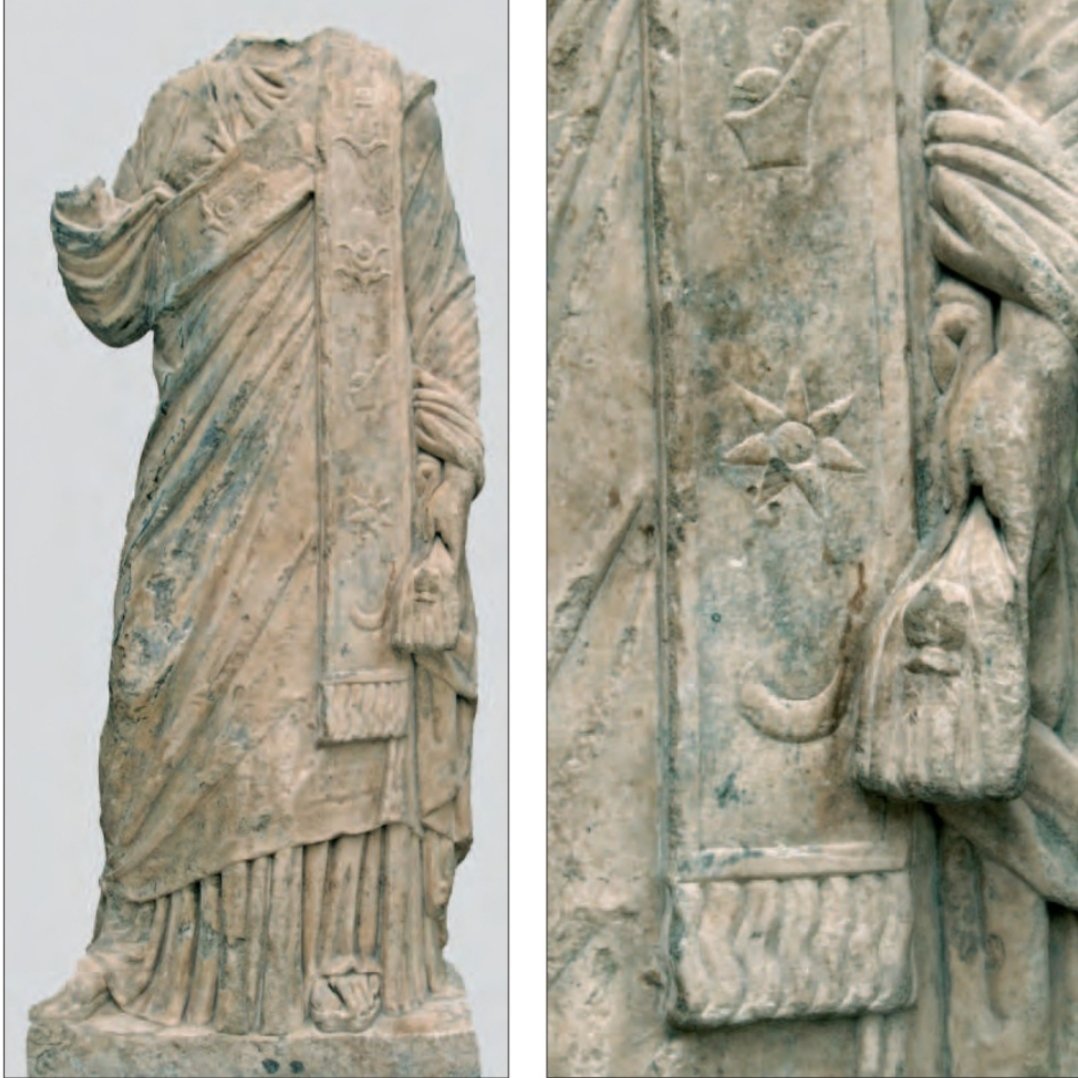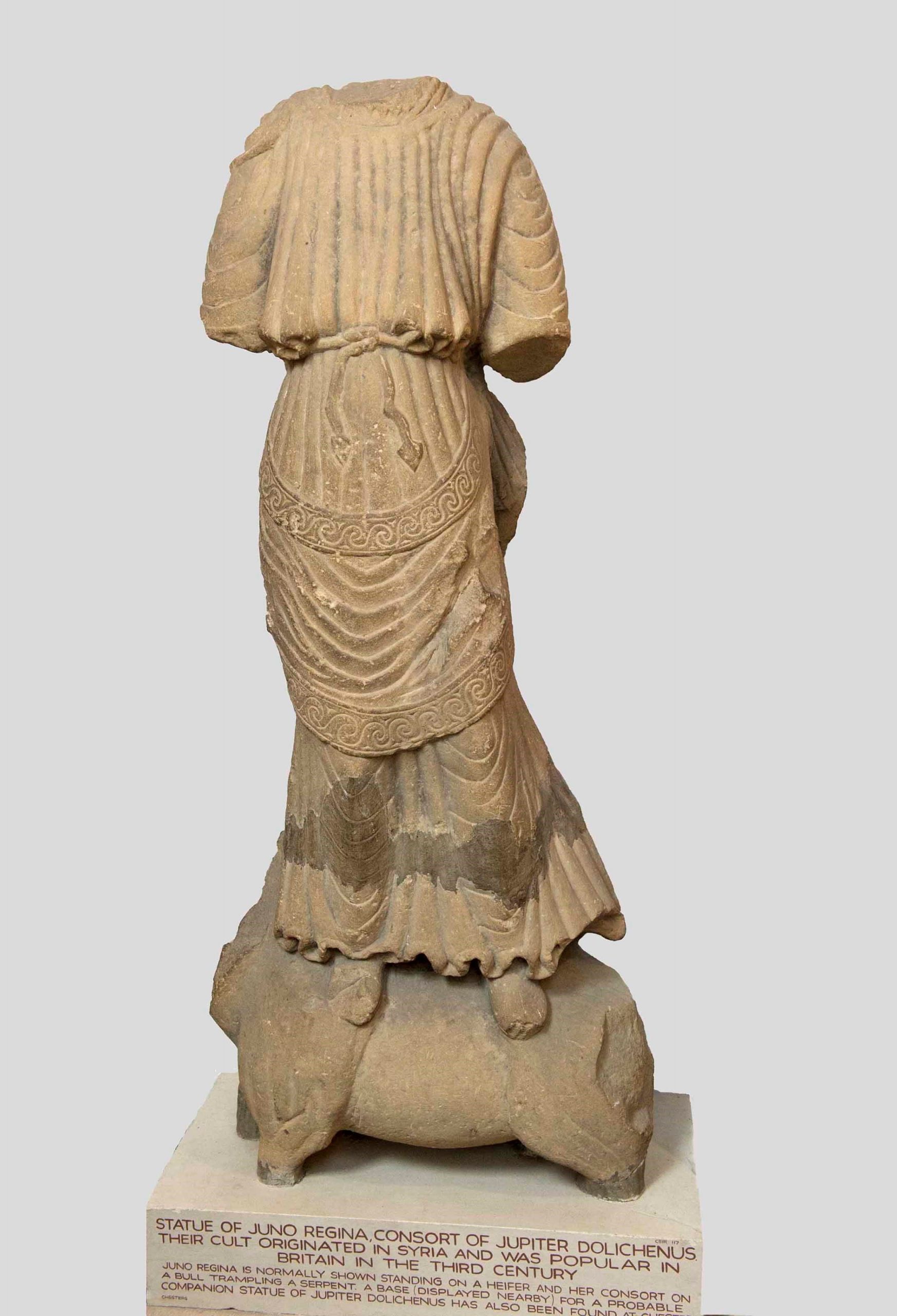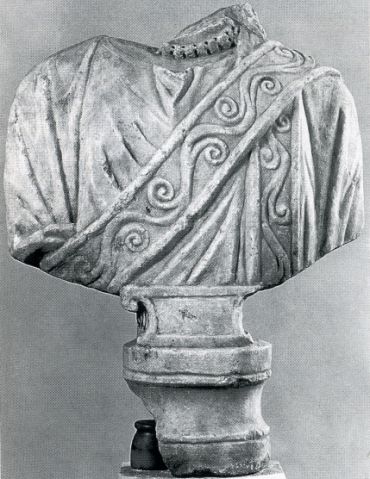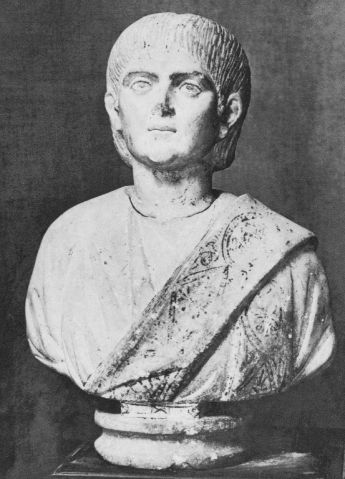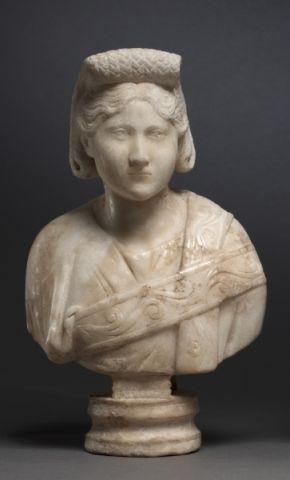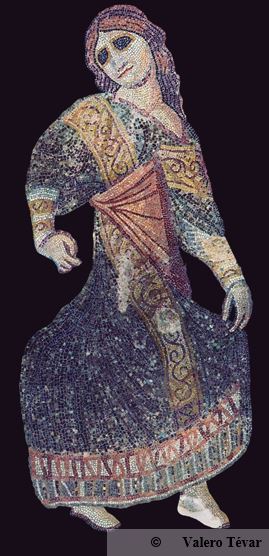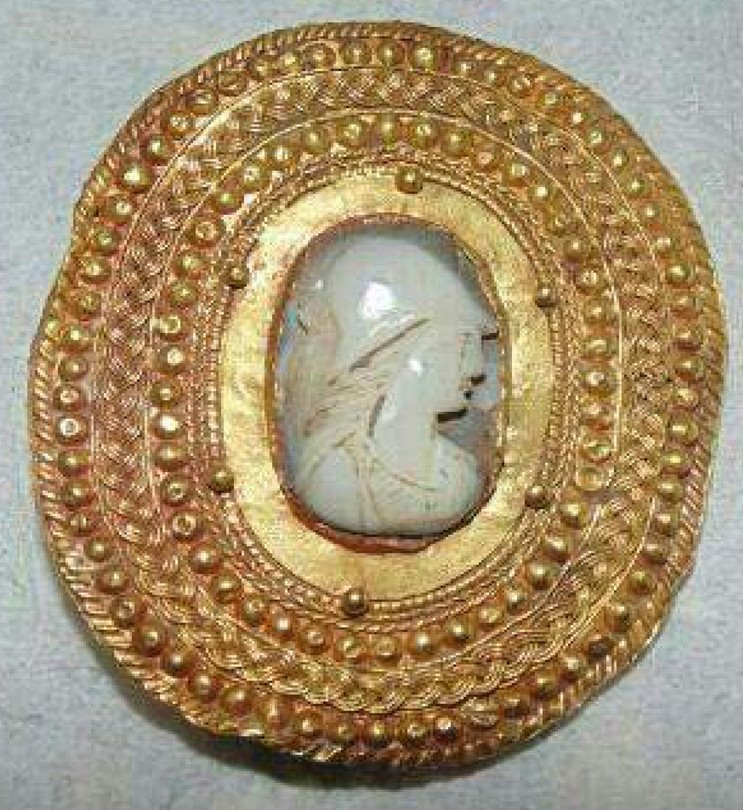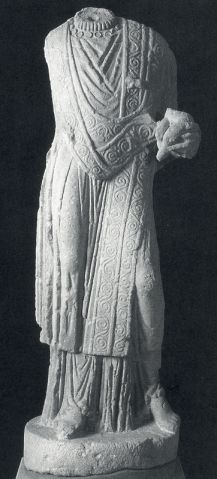


Deutsch-Altenburg, Museum Carnuntinum, inv. no. 3780
Record from the LSA database http://laststatues.classics.ox.ac.uk/database/detail.php?record=LSA-1273
“DESCRIPTION (Subject)
The portrayed is standing over her right leg, the left knee is bent and the left heel raised. Her left arm is bent in the elbow and holding a nude baby.
The attire consists in an ankle-length tunic with rich folds, an upper tunic (colobium) which ends at the shins and is of a heavier material, and a double sash. The latter starts at the lower seam of the upper tunic, is lead to the left shoulder, in the back to the right shoulder, from here across the front side of the body to be hung over the left forearm. The borders a decorated with seams on all sides, and a spiral band in relief. The feet are clad in fine shoes; around the neck there are two chains of pearls and rings.
HONORAND AND DATE
Garment, jewellery and the child identify the portrayed as a female; the association with the cuirassed statue usually ascribed to an emperor (LSA-1301) identifies her as an imperial lady. As in the case of the male statue, the missing head complicates closer identification. The male cuirassed statue possibly is an image of a divinity (Jupiter Dolichenus ?) which in consequence would identify our female statue as a Syrian goddess.
Schober 1935 proposed to recognize Julia Mamaea who be portrayed along with her son Alexander Severus; this would fit the titles of mater Augusti, mater patriae, mater Castrorum, even mater universi generis humani bestowed on that empress. Jobst 1992 dated to the Severan period (193-235) arguing that this period was the heyday of the cult of Syrian deities in Carnuntum. Schade 2003 readopted an earlier proposal to identify Aurelian’s mother in the portrayed, relating this to the religious program of that emperor. Krüger 1967 considered a date in the later 3rd/early 4th century.
A date in the later 3rd or early 4th century is possibly supported by the decorated border the empress is wearing. Alföldy 1970 observed the same type of garment on coins of Magnia Urbica (wife of Carus, 282-3, Augusta and mater castrorum senatus ac patriae), Galeria Valeria (wife of Galerius, 293-311, Augusta and mater castrorum), Helena (mother of Constantine I, 306-37) and Fausta (wife of Constantine I 307-26).
FURTHER DISCUSSION
A similar sash and necklace are displayed by the headless female bust LSA-1706.
The draping of the sash on our statue resembles that of the late antique toga.”
Zur Gewandstatue im Museum Carnuntinum
Alice Landskron
Forum Archaeologiae — Zeitschrift für klassische Archäologie 38 / III / 2006
https://homepage.univie.ac.at/elisabeth.trinkl/forum/forum0306/38carn.htm
Franz Studniczka was the first to deal with the interpretation of the figures: he recognized a male figure in the statue and interpreted it as Elagabal in the robe of a priest of Jupiter Heliopolitanus. In the boy he saw an allusion to child sacrifice. Since such representations are not known, one will refrain from such an interpretation for this reason alone. Elagabal also fell victim to the damnatio memoriae , so the location in the camp’s Principia would be problematic – and the preservation of the figure can only be explained with a reworking. However, the arguments for this are not convincing.




Lupa 11573 database record >> http://lupa.at/11573
Related to the “statue of an emperor” (cult image of Jupiter Heliopolitanus) http://lupa.at/11574
Le statue di Carnuntum: culti solari e ideologia imperiale; Daniela Gallo
https://www.jstor.org/stable/24419567
Carnuntum (military camp) https://austria-forum.org/af/AustriaWiki/Carnuntum_%28Milit%C3%A4rlager%29
Picture from the museum website Weibliche Gewand statue mit Kind KAt Nr 17
Museum https://www.carnuntum.at/de/aktuelles-in-und-ueber-carnuntum/fotos-und-material

